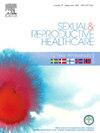探索绝经期症状群-系统回顾和荟萃分析
IF 1.7
3区 医学
Q3 PUBLIC, ENVIRONMENTAL & OCCUPATIONAL HEALTH
引用次数: 0
摘要
本研究旨在通过对PubMed、Medline、Cochrane图书馆和APA PsycINFO从1996年到2023年的出版物进行系统文献综述,确定并比较围绝经期和绝经后妇女的症状群及其严重程度。meta分析遵循PRISMA指南,最初筛选425篇文章,其中14篇文章符合相关性、科学严谨性标准,并关注更年期妇女的症状聚类。从14项选定的研究(n = 14,760)中提取数据,包括研究特征、参与者人口统计、识别症状群的方法、每个群中的特定症状,以及与生活方式因素、遗传或社会心理因素的关联。综合研究结果,量化不同症状群之间的关系,确定四种不同的症状群:躯体症状、血管舒缩症状、心理症状和性症状。躯体症状群的总标准化平均差(SMD)为- 0.89 [95% CI = - 1.70, - 0.07],表明差异具有统计学意义。然而,在血管舒缩、性和心理症状中没有观察到结论性的区别,这突出了症状表现的可变性。尽管存在异质性,但对躯体症状的总体影响仍具有统计学意义(Z = 2.14, P = 0.03)。研究结果强调了更年期妇女症状的复杂性,强调了量身定制的以人为中心的干预和纵向研究的必要性。本文章由计算机程序翻译,如有差异,请以英文原文为准。
Exploring symptom clusters across the menopausal stages – systematic review and meta-analysis
This study aimed to identify and compare symptom clusters and their severity among perimenopausal and postmenopausal women using a systematic literature review on publications from 1996 to 2023 across PubMed, Medline, Cochrane Library, and APA PsycINFO. The meta-analysis followed the PRISMA guideline, initially screening 425 articles, with 14 articles meeting the criteria of relevance, scientific rigor, and a focus on symptom clustering in climacteric women. Data from the 14 selected studies (n = 14,760) were extracted, including study characteristics, participant demographics, methods for identifying symptom clusters, specific symptoms within each cluster, and associations with lifestyle factors, genetics, or psychosocial elements. The findings were synthesized to quantify relationships between different symptom clusters, identifying four distinct groups: somatic, vasomotor, psychological, and sexual symptoms. The overall standardized mean difference (SMD) of −0.89 [95 % CI = −1.70, −0.07] was found for somatic symptom clusters, indicating significant differences. However, no conclusive distinctions were observed in vasomotor, sexual, and psychological symptoms, highlighting variability in symptom presentation. Despite this heterogeneity, the overall effect for somatic symptoms remained statistically significant (Z = 2.14, P = 0.03). The findings emphasize the complexity of symptomatology in climacteric women and underscore the need for tailored person-centered interventions and longitudinal studies.
求助全文
通过发布文献求助,成功后即可免费获取论文全文。
去求助
来源期刊

Sexual & Reproductive Healthcare
PUBLIC, ENVIRONMENTAL & OCCUPATIONAL HEALTH-
CiteScore
2.70
自引率
5.60%
发文量
73
审稿时长
45 days
 求助内容:
求助内容: 应助结果提醒方式:
应助结果提醒方式:


